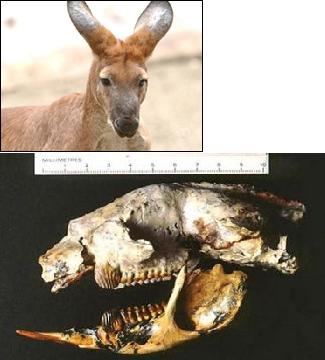News agencies

Fang-fanged kangaroo fossil sheds light on the breed's history. A bird described by the researchers as a "demonic duck of death" was also discovered next to it.
Paleontologists excavating in northern Australia have discovered fossil evidence of several species previously unknown to science, including a "meat-eating kangaroo". This creature lived from 20 million years ago to about 10 million years ago. The researchers also uncovered evidence of a large meat-eating fowl known as the "Monstrous Doomsday Duck."
The dig site in Queensland has so far produced the remains of 20 unknown ancient creatures. The team from the University of New South Wales made the discovery in the Riversleigh fossil field in the northwest of the country.
Professor Michael Archer, who headed the team, said that the remains of a meat-eating kangaroo with fangs reminiscent of those of a wolf, alongside the remains of a long-armed sprinting kangaroo that is unable to jump like the modern kangaroo. "Because they couldn't jump, they were galloping kangaroos, with big, strong front legs. Some of them had large fangs like wolves" explained Professor Archer.
Vertebrate paleontologist Sue Hand said that the modern kangaroo bears little resemblance to its ferocious ancestors, who lived about 20 million years ago. These creatures had teeth that could chew bones and cut flesh," she said.
The excavation team also discovered a prehistoric lungfish and large duck-like birds, which were described as "very large birds, actually more like ducks than birds." They were nicknamed by us the 'demonic duck of death' and some of them, at least, would also eat meat," Hand told ABC radio.
Prof. Archer said that the team is now studying the fossils to better understand how they were affected by the climate changes of the Miocene era, which was between 5 and 24 million years ago.
They know evolution - fossils
Drafting and editing: H. J. Glykasm, translations and technical writing
